
Tess of the d'Urbervilles: A Pure Woman Faithfully Presented is a novel by Thomas Hardy. It initially appeared in a censored and serialised version, published by the British illustrated newspaper The Graphic in 1891, then in book form in three volumes in 1891, and as a single volume in 1892. Though now considered a major 19th century English novel and Hardy's magnum opus, Tess of the d'Urbervilles received mixed reviews when it first appeared, in part because it challenged the sexual morals of late Victorian England. Tess was portrayed as a fighter not only for her rights, but also for the rights of others.

Sleepwalking, also known as somnambulism or noctambulism, is a phenomenon of combined sleep and wakefulness. It is classified as a sleep disorder belonging to the parasomnia family. It occurs during slow wave stage of sleep, in a state of low consciousness, with performance of activities that are usually performed during a state of full consciousness. These activities can be as benign as talking, sitting up in bed, walking to a bathroom, consuming food, and cleaning, or as hazardous as cooking, driving a motor vehicle, violent gestures and grabbing at hallucinated objects.

Charles Brockden Brown was an American novelist, historian, and editor of the Early National period. He is generally regarded by scholars as the most important American novelist before James Fenimore Cooper. He is the most frequently studied and republished practitioner of the "early American novel," or the U.S. novel between 1789 and roughly 1820. Although Brown was not the first American novelist, as some early criticism claimed, the breadth and complexity of his achievement as a writer in multiple genres makes him a crucial figure in U.S. literature and culture of the 1790s, and the first decade of the 19th century. He has been referred to as the "Father of the American Novel." Brown was also a significant public intellectual in the wider Atlantic print culture and public sphere during the era of the French Revolution.
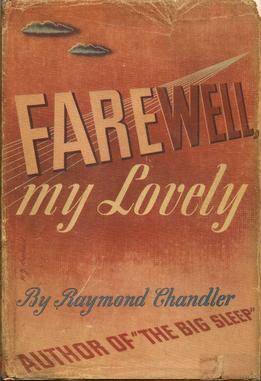
Farewell, My Lovely is a novel by Raymond Chandler, published in 1940, the second novel he wrote featuring the Los Angeles private eye Philip Marlowe. It was adapted for the screen three times and was also adapted for the stage and radio.
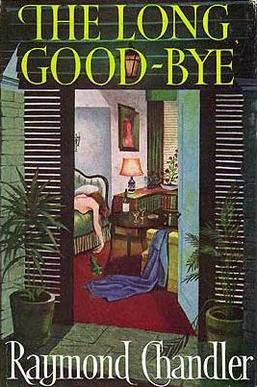
The Long Good-bye is a novel by Raymond Chandler, published in 1953, his sixth novel featuring the private investigator Philip Marlowe. Some critics consider it inferior to The Big Sleep or Farewell, My Lovely, but others rank it as the best of his work. Chandler, in a letter to a friend, called the novel "my best book".

Elephants Can Remember is a work of detective fiction by British writer Agatha Christie, first published in 1972. It features her Belgian detective Hercule Poirot and the recurring character Ariadne Oliver. This was the last novel to feature either character, although it was succeeded by Curtain: Poirot's Last Case, which had been written in the early 1940s but was published last. Elephants Can Remember concentrates on memory and oral testimony.

Murder is Easy is a work of detective fiction by Agatha Christie and first published in the UK by the Collins Crime Club on 5 June 1939 and in the US by Dodd, Mead and Company in September of the same year under the title of Easy to Kill. Christie's recurring character, Superintendent Battle, has a cameo appearance at the end, but plays no part in either the solution of the mystery or the apprehension of the criminal. The UK edition retailed at seven shillings and sixpence (7/6) and the US edition at $2.00.
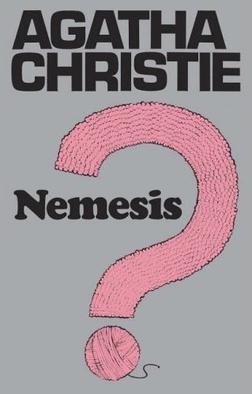
Nemesis is a work of detective fiction by Agatha Christie (1890–1976) and first published in the UK by the Collins Crime Club in November 1971 and in the US by Dodd, Mead and Company later in the same year. The UK edition retailed at £1.50 and the US edition at $6.95. It was the last Miss Marple novel the author wrote, although Sleeping Murder was the last Miss Marple novel to be published.
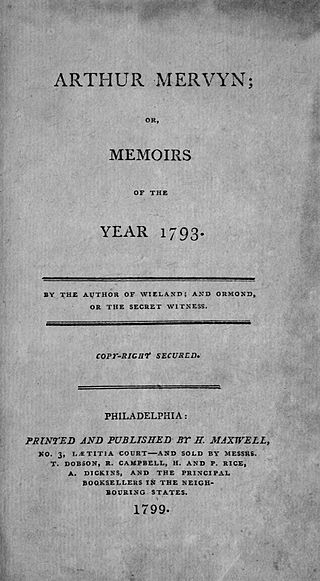
Arthur Mervyn, a novel written by Charles Brockden Brown, was published in 1799. One of Brown's more popular novels and representative of Brown's dark, gothic style and subject matter, Arthur Mervyn is also recognized as one of the most influential works of American and Philadelphia Gothic literature. It started earlier as a serial in Philadelphia's Weekly Magazine of Original Essays, Fugitive Pieces, and Interesting Intelligence, but it was discontinued because the magazine's writers were not keen on the feature and the editor of the magazine died from yellow fever. Hence, Brown decided to issue the book himself. The novel also includes the yellow fever epidemic in Philadelphia between August–October 1793 as an important plot element.

Bloody Bones is a horror/mystery novel by American writer Laurell K. Hamilton, the fifth book in the Anita Blake: Vampire Hunter series.
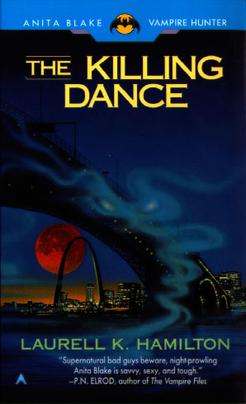
The Killing Dance is a horror/mystery novel by American writer Laurell K. Hamilton, the sixth book in the Anita Blake: Vampire Hunter series.

Phoenix in Obsidian is a science fantasy novel by Michael Moorcock. First published in 1970, it is the second book in a series that follows the adventures of the Eternal Champion as he is flung from one existence to another. The first book in the series, The Eternal Champion, told the story of John Daker, an average 20th-century man who suddenly found himself incarnated as Erekosë, a legendary hero of Earth in the distant past. He had been called to lead humanity against its Eldren foes, but ended up taking the Eldren's side. Phoenix in Obsidian continues the story, which is concluded in The Dragon in the Sword. The trilogy is part of a larger cycle about the Eternal Champion as defender of the Multiverse.

Wieland: or, The Transformation: An American Tale, usually simply called Wieland, is the first major work by Charles Brockden Brown. First published in 1798, it distinguishes the true beginning of his career as a writer. Wieland is sometimes considered the first American Gothic novel. It has often been linked to Caleb Williams by William Godwin. Godwin's influence is clear, but Brown's writing is unique in its style. Wieland is often categorized under several subgenres other than gothic fiction, including horror, psychological fiction and epistolary fiction, which are listed at Project Gutenberg.
American gothic fiction is a subgenre of gothic fiction. Elements specific to American Gothic include: rationality versus the irrational, puritanism, guilt, the uncanny, ab-humans, ghosts, and monsters.
Elizabeth Ferrars, born Morna Doris MacTaggart, was a British crime writer.
Memoirs of Carwin, the Biloquist (1803–1805) is a story fragment written by Charles Brockden Brown and published over a period of two years in monthly installments of Brown's Literary Magazine. Brown never completed his story, and it has always remained unfinished, and unresolved. Carwin is technically the sequel to Brown's previous work, Wieland; or the Transformation, because Brown wrote it five years afterwards; however, the events in Carwin occur prior to the plot established in Wieland. Memoirs of Carwin, the Biloquist follows the life of a young man by the name of Carwin as he realizes his biloquial, or ventriloquist, talents. Carwin develops this ability to perfection, being able to manipulate his own voice to sound like any person he wants.
The James Yates Murders refer to a tragic occurrence in 1781 in which James Yates brutally murdered his family, consisting of his wife and his four children, on claims that a voice was instructing him to do so.
Sky-Walk is the first completed novel by Charles Brockden Brown. It was started in 1797 and completed by March 1798, when an “Excerpt” was published in The Weekly Magazine of Original Essays, Fugitive Pieces, and Interesting Intelligence. The novel was subsequently lost, though Brown's later novel Edgar Huntly takes up the same themes as Sky-Walk, most notably, that of sleepwalking. Like Brown's other novels, Sky-Walk is an example of the American Gothic novel.

Joyland is a novel by American writer Stephen King, published in 2013 by Hard Case Crime. It is King's second book for the imprint, following The Colorado Kid (2005). The first edition was released only in paperback, with the cover art created by Robert McGinnis and Glen Orbik. A limited hardcover edition followed a week later. The novel was nominated for the 2014 Edgar Award for Best Paperback Original.

Logan, a Family History is a Gothic novel of historical fiction by American writer John Neal. Published anonymously in Baltimore in 1822, the book is inspired by the true story of Mingo leader Logan the Orator, but weaves a highly fictionalized transatlantic plot of war, murder, sex, rape, incest, hatred, and gratuitously violent detail. The story documents romantic, sexual, and violent interactions between British colonizers and Indigenous peoples on the Colonial Virginia frontier in the years directly preceding the Revolutionary War. It paints Indigenous genocide as the heart of the American story and follows a long cast of characters connected to each other in a complex web of overlapping love interests, family relations, and sexual activity. It is considered unique amongst contemporary fiction for the preponderance of sexually explicit content and gratuitous violence.















